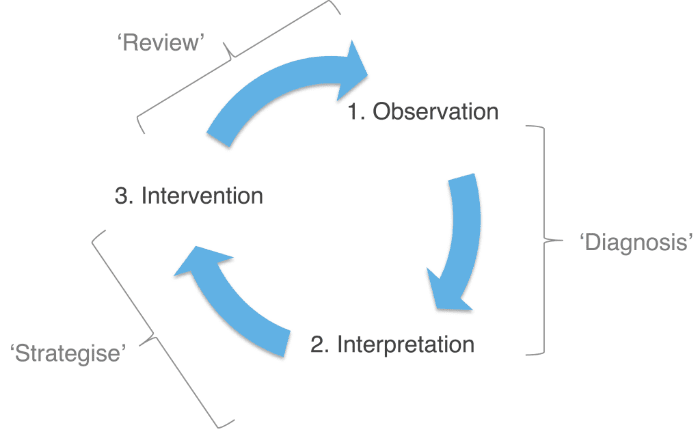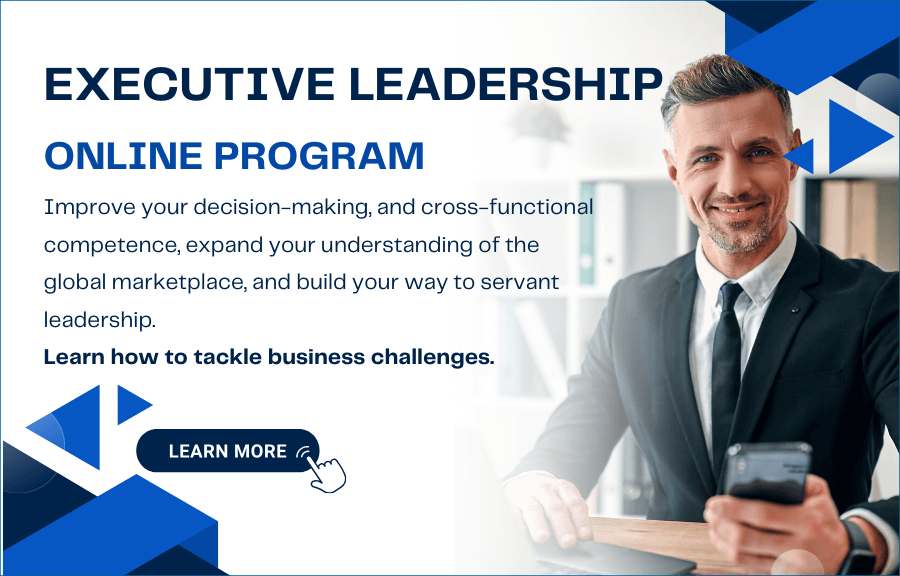Adaptive Leadership: 5 Principles to Be an Adaptive Leader
Adaptive leadership is using a set of strategies and practices you can use to overcome obstacles, accomplish meaningful change, and adapt to challenging and complex environments. We are living in a harsh competition age and the fast pace of business dynamics is like never before. This makes adaptive leadership a crucial strategy for many businesses to be successful. We have described adaptive leadership and the five principles of being an adaptive leader in this article.
In this article
📌 Hint: Do not skip this article, you will find FREE Leadership Training resources throughout the article.
What is Adaptive Leadership?
Inception of the adaptive leadership dates back to 1994. Ron Heifetz, a Harvard professor, described adaptive leadership as a set of strategies and practices you can use to overcome obstacles, accomplish meaningful change, and adapt to challenging and complex environments.
Heifetz’s theory was based on natural selection theory in biology. This theory supports that animals and plants which can adapt to changing conditions can survive for a longer time. Based on the theory, animals and plants keep the crucial parts of their body for their survival, and get rid of unnecessary parts as the species evolve over time.
Similarly, adaptive leaders take the most useful competence, skills, and lessons from past events and experiences to use them in the future. According to Heifetz, the adaptive leadership process has three stages as shown in the following figure.

3 Stages of Adaptive Leadership
Let’s go over the three stages of adaptive leadership now.
1- Observing Events and Patterns
During business transformation, there is a critical question you should ask: What’s worth keeping and what is not? Which processes and practices are useful to the organization and which are not? Which processes slow down business? How can you achieve faster decision-making?
Adaptive leadership requires observing the business, determining the patterns, keeping the useful practices, and eliminating the unnecessary ones. For example, bidding farewell to a vendor relationship the company has had for decades or nixing a process that used to boost efficiency but now hinders it. In short, for an organization to grow, this parting with the past has to happen because letting go has the power to prompt new economic opportunities, thoughts, and value systems.
2- Interpreting and Developing Hypotheses
At this stage, an adaptive leader directs and encourages creativity and innovation. New hypotheses are developed and tested at this stage of the adaptive leadership cycle. Be prepared for failures at this stage as the company is testing new things that have not been tested before. Adaptive leaders understand this and are prepared for these challenges because they know that within these challenges lies the potential to propel the company to new heights.
For instance, hypotheses, the company decides to remove managerial approvals up to $1,000 monthly expenses from employees. This will save time for managers and employees will not have to wait for their expenses to be approved to do their work. This can be tested in a few departments at first to see how it goes, and the process can be improved accordingly before making it company-wide applicable.
3- Designing Interventions
In the third phase of adaptive leadership, the trial phase for developing new approaches to operating the organization is over. The practices and hypotheses that worked well are applied and the ones that did not work out are eliminated. At this stage, adaptive leaders carefully monitor the impact of new systems and processes, report their findings, and work with teams to make any necessary adjustments for improvement.
💡 Read 15 Types of Leadership article to learn about other leadership styles.
These steps are iterative, so once you’ve completed them all, you repeat the process and refine your observations, interpretations, and interventions until you’re satisfied with the solution.
Enhance Your Leadership Skills – Executive Leadership Training Program
San Francisco Business School offers an online, self-paced comprehensive executive leadership training program. You can consider enrolling in this program to improve your HR leadership skills.
Adaptive Leadership Example – Best Buy Case Study
It is best to go over a real-life case example for adaptive leadership. In 2003, competition in the U.S. consumer electronics market was particularly fierce, with Wal-Mart®, Target®, and Costco® threatening to take market share from perennial leaders, Best Buy® and Circuit City®.
Julie Gilbert, Best Buy VP, noticed that her organization skipped an opportunity to win more market share by focusing on young and male customers and ignoring women. Julie decided to change this strategy and worked on how to target female customers.
Following Gilbert’s adaptive leadership, Best Buy updated its stores to make them more appealing to female customers. Some of the practices were widening the aisles for baby strollers, softening the lightning, and reducing the volume of background music in the stores. The output was fruitful. Best Buy increased the revenue from female customers by $4.4 billion in four years. This counted an 11% rise in overall revenue mainly because of Gilbert’s adaptive leadership strategy.
Like Best Buy, all businesses must adapt to different environments, whether these come from changes in technology, customer expectations, laws and regulations, or employees’ expectations. Leaders must find ways to adapt and take advantage of the opportunities that these changes bring.
5 Principles of Adaptive Leadership – How to Become an Adaptive Leader
There are five common principles of adaptive leadership. You can apply these in your role to become an adaptive leader and adapt your business to changing conditions.
1- Navigate the Business Environment
Adaptive leaders must embrace uncertainty and adopt new approaches to perform well in changeable environments. To succeed in this dimension, you should apply some tactics as follows.
- Get the buy-in of all members of the organization. Less experienced professionals are more likely to be critical of processes and they can ask tough questions compared to more experienced professionals. If you involve as many people as possible, you can identify more improvement areas.
- Share the leadership role. Every person has their own strengths and weaknesses. In some cases and roles, some people can be more successful than others while in another case, the same person can be less successful while another one can be more successful. You can use situational leadership strategies to allocate leadership responsibility to those who are most suited to making particular decisions to achieve the best result for your organization. Also, consider applying a laissez-faire leadership style.
- Keep questioning. Analyze the risks and make tests by creating new hypotheses. As part of adaptive leadership, you can create “what if” scenarios to find new improvement areas. For instance, “What happens if we apply agile project management rather than a waterfall?”, “what happens if we limit the meeting durations to a maximum of 30 minutes?”.
- Stay objective. Sometimes, it is hard to be objective, and humans are emotional and subjective in many cases. Heifetz used the concept of “getting on the balcony” as opposed to “being on the dance floor” to refer to the perspective you need. This means spotting trends and patterns rather than focusing on the minutiae of day-to-day activity.
2. Lead With Empathy
Great leaders are empathetic. Adaptive leaders create a shared sense of purpose and manage through influence rather than command and control. You can read more about this in the charismatic leadership article. To succeed in this dimension, you should apply the following tactics.
- See the world from others’ perspectives. Do not focus on your or your team’s self-interests. Adaptive leadership requires focusing on the big picture and focusing on the optimum solutions that fit everyone or at least for the benefit of the majority.
- Develop rapport with your team. Before you can influence others, you need to make a personal connection with them. To do so, you’ll need to understand their beliefs, values, and concerns. You can strengthen your bond with your team members by improving your emotional intelligence. You can apply authentic leadership to improve your rapport with your team.
- Create a Common Goal. What is the mission and vision of the organization? What is the big picture? Encourage your followers by showing a clear vision and mission of the organization. Note that, these should align with the team members’ values and interests.
- Reward accomplishment. Do not hesitate and delay rewarding accomplishments. Rewards can be monetary or non-monetary. For instance, a bonus payment for overperformance is a monetary reward. However, giving additional leading responsibility is a non-monetary reward if the team member is willing to take on new roles. By rewarding them, you build their loyalty and commitment to the organization and to your goals. HR leadership is also crucial when defining an organization’s rewards and punishment policies.
Watch Adaptive Leadership – Principles of Being an Adaptive Leader YouTube Video
We have a 12-minute video describing adaptive leadership and its principles. Watch now!
3. Learn Through Self-Correction
Adaptive leadership requires encouragement and persistence in experimentation. There will be failures and successes through these experiments. The important point is to try and find the correct practices. To succeed in this dimension, you can apply the following tactics.
- Build trust and integrity. Adaptive leadership should ensure to creation of an environment where the team members can propose their ideas. New ideas should be encouraged as new practices can emerge from these ideas.
- Encourage creativity and innovation. Ideas generate solutions and innovations. The more ideas your people generate, the more likely it is that you’ll arrive at an effective solution. Encourage people to discuss ideas, brainstorm, and evaluate different perspectives. Foster group discussions that will emerge new ideas.
- Foster a learning environment. New ideas and innovations come out of competent people. Ensure an environment where people are not afraid of making mistakes. Improve skills and competence of the people. Pay attention to growing emerging leaders. New leaders with improved team leadership skills can lead the company to success.
- Experiment and test ideas. Business tests allow you to assess your ideas before applying them to a large scale. For instance, if you are trying a new process, try it in a few departments or locations at first. You can see the weaknesses and strengths of the process. And then, you can apply it to all departments of the company.
- Manage uncertainty. Many people are resistant to change by nature. You should guide people through the change and support them during new adaptions.
4. Create Win-Win Solutions
Adaptive leaders focus on achieving success for both the organization and its external network of stakeholders. To succeed in this dimension, you can apply the following tactics.
- Build acceptance. The faster your people adjust to change, the less disruption there will be. Test your skills to pinpoint any areas that you need to develop further.
- Extend engagement outside your four walls. Your organization’s success likely depends on the contribution and engagement of its external suppliers, vendors, and customers. Allow them to participate in decision-making and ask for their opinions regularly. Adaptive leadership welcomes new ideas inside and outside.
- Strengthen the company’s reputation through social responsibility initiatives. Leaders must focus on more than the bottom line to succeed in the marketplace. By connecting with its community, an organization can help others while improving customer loyalty and its reputation as an employer of choice.
5. Become Persistent Until You Find the Best Practices
Adaptive leaders will never stop improvement. There is no end to process, practice, and tool improvement. Because, technology changes, industry changes, and market changes, as a result, your organization must be adaptive to ever-changing conditions. While finding and applying the best practices, you can follow the following tactics.
- Do not be afraid to fail. If you are afraid to fail, you cannot try new ideas. This will hinder creativity and innovation.
- Continue to ask “What’s Next?”. Once you iterate your results, focus on the next one. Improvement should be inevitable under adaptive leadership.
Free Online Leadership Skills Training Program
One of the requirements to be a good leader is to improve yourself continuously. The best way to do this is, to enhance your competence through training. Take a step ahead and jumpstart your leadership competence. Enroll in our 1-hour Free Leadership Training program.
Benefits of Adaptive Leadership
Organizations that adjust to changing circumstances do better financially than ones that don’t. It claims that agile, flexible businesses continually demonstrate strong, sustainable performances and outperform their peers during volatile periods.
Similarly, leaders who adopt an adaptive leadership approach alongside a transformational leadership style are often the best equipped to steer organizations through turbulent periods of change. They raise morale by generating solutions to issues with other team members, and then continually refine those ideas until they arrive at the best one. This iterative approach means that the final decision is typically the most effective one.
The process of coming up with multiple solutions builds a culture where people can have healthy debates with one another. It also empowers them to generate their own ideas and to think independently.
Flaws of Adaptive Leadership
Adaptive leadership does have its drawbacks. The process of exploring new possibilities can bring a degree of uncertainty, and this can create friction among team members. Leaders may resent their ideas being challenged, and block others’ suggestions.
It’s also not a leadership style that’s suitable in all situations. For example, it’s better applied to more unpredictable environments than stable ones. When an industry is mature, leaders may need to adopt a style that’s more disruptive to innovate and push the business ahead.
Furthermore, adaptive leadership may not be appropriate when senior managers need to make important decisions quickly, whereas authoritative leadership will be more suitable. It takes time to develop different processes and for people to adapt to new situations. Therefore, a more autocratic leadership approach may be suitable in this environment.
Famous Adaptive Leaders
There are several famous adaptive leaders. We will be focusing on two of them here.
1- Abraham Lincoln
Abraham Lincoln was an American lawyer, politician, and statesman who served as the 16th president of the United States from 1861 until his assassination in 1865. Lincoln accepted diversity, appointed rivals for his cabinet, and was always open to debate and criticism. Lincoln was a believer of adaptive leadership and he also had an open-door policy, inviting citizens to discuss their challenges with him. His attentive ear and natural empathy helped him earn respect.
2- General George Patton
George Smith Patton Jr. was a general in the United States Army who commanded the Seventh United States Army in the Mediterranean Theater of World War II, and the Third United States Army in France and Germany after the Allied invasion of Normandy in June 1944. The adaptive leadership style worked well for Patton. He gained respect as a military leader in large part by soliciting input from his team. Always one to anticipate trouble, he believed in having a backup plan in case a situation went south.
Summary
Adaptive leadership is using strategies and practices to overcome ever-changing business conditions and trying to achieve the best. Market changes, customer changes, unexpected things happen, and business changes. Adaptive leadership requires adapting the business to ever-changing conditions and managing the organization to success.
There are three stages of adaptive leadership. These are, observing events and patterns, interpreting and developing hypotheses, and designing interventions. There are five principles of adaptive leadership. These are navigating the business environment, leading with empathy, learning through self-correction, creating win-win solutions, and persistence until finding the best practices.
Organizations applying adaptive leadership are financially more successful. People are more committed as their ideas are valued and performance is typically better. However, there are flaws in the adaptive leadership style as well. Evaluating all ideas may require significant time and is not feasible when quick decisions need to be made. Abraham Lincoln and General George Patton are two famous adaptive leaders.

